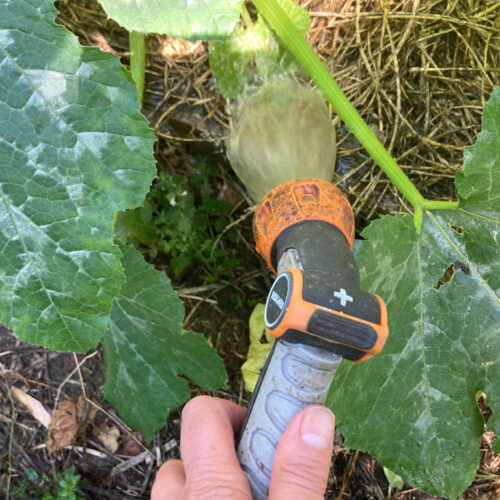How to beat the summer heat
2023-10-25T02:31:20+11:00
Helen McKerral has plenty of tricks to help keep vegies happy and productive throughout the summer months, including choosing heat-tolerant varieties.
Summer, winter and mid-season crops describe vegetables that thrive and ripen in different temperature ranges. Most brassicas (think broccoli, cauli and kale) are planted in summer or early autumn and ripen during cooler weather. Tomatoes, zucchinis, cucumbers, capsicum, melons, squash and chillies are traditional warm season or summer crops, ripening during the hottest time of year. However, most are really only happy up to 32–35°C, beyond which they become stressed. Heatwaves in Australia regularly exceed 40°C.
Fortunately, there is a multitude of cultivars within these groups, and some of them are more adapted to extreme heat than others; the country and region from which a cultivar originates is a good indicator as to its toughness. Tough cultivars often have smaller, hairy(-ier) or thicker leaves, more extensive root systems, or bear smaller fruit, fruit with thicker skins or fruit and/or flowers that hold rather than drop in higher temperatures.
One scorching year, my row of tomatoes had an uneven strip through the centre halfway up without fruit; below were fruit fertilised earlier in the season when it was cooler, and then above the strip were fruit that formed later after the worst of the heat had passed. Some cultivars had much wider empty bands than others – it was fascinating. Whatever your climate, you’ll find something that thrives!

Seeds and seedlings
In hot weather, sowing seed often works better than transplanting seedlings because you avoid root disturbance. Small, delicate seedlings are especially vulnerable to heat, so watch the forecast and plan accordingly. If you are forced to plant in hot weather and you’ve bought seedlings from a sheltered nursery or plan to raise your own under shade cloth, choose multicell punnets to minimise root disturbance. Harden seedlings by placing punnets into progressively more exposed locations over several days to toughen them before planting into their final position in the ground. This works for potted plants as well.
In hot weather, I cover newly planted seedlings with insect exclusion netting or shade cloth draped over a few stakes. This is especially useful for brassica seedlings in late summer where you’re protecting them from cabbage white butterflies as well as heat and wind. If forecast heat is moderate or brief rather than extreme, leafy twigs poked into the ground around seedlings is usually enough.
Planting seedlings into thick mulch, such as pea straw, also provides protection from wind and heat. Each seedling nestles in the bottom of a small cup-shaped depression, surrounded by pea straw. If I water in the morning, the pea straw retains sufficient moisture during the day to increase humidity around the seedlings.
You’ll find Helen McKerral’s full article in our Early Summer 2023 issue (OG 145) — you can get a copy delivered to your door here!







